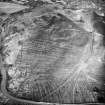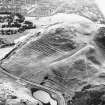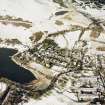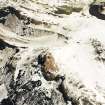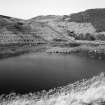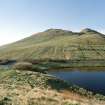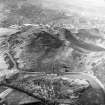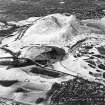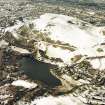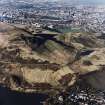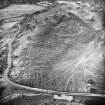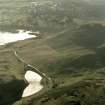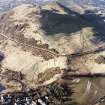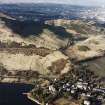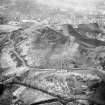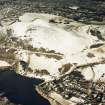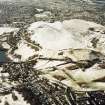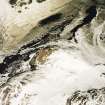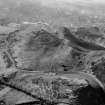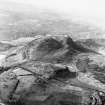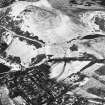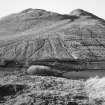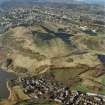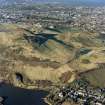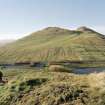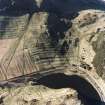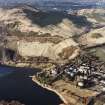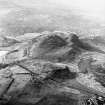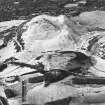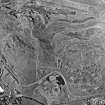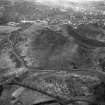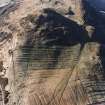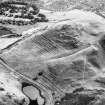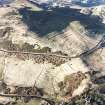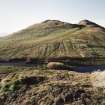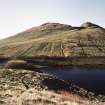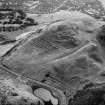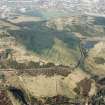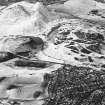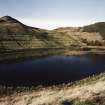Edinburgh, Holyrood Park, Dunsapie
Cultivation Terrace(S) (Medieval)
Site Name Edinburgh, Holyrood Park, Dunsapie
Classification Cultivation Terrace(S) (Medieval)
Alternative Name(s) Dunsapie 2; Queen's Park
Canmore ID 52140
Site Number NT27SE 135
NGR NT 27967 73098
NGR Description Centred NT 2796 7309
Datum OSGB36 - NGR
Permalink http://canmore.org.uk/site/52140
- Council Edinburgh, City Of
- Parish Edinburgh (Edinburgh, City Of)
- Former Region Lothian
- Former District City Of Edinburgh
- Former County Midlothian
NT27SE 135 centred 2797 7311
See also NT27SE 76.
(Centred NT 2797 7311) Cultivation Terraces (NR)
OS 6"map, (1966)
A series of cultivation terraces still survives on a hollow slope at the base of the hill overlooking Dunsapie Loch on the W, and close to the margin of the loch. This series is more irregular than those described on NT27SE 76, and the original lines have been much destroyed. Enough remains of their construction, however, to suggest that they are contemporary with NT27SE 76.
RCAHMS 1929, visited 1928.
These cultivation terraces are as described by the RCAHMS. They are not good examples.
Visited by OS (S F S) 8 December 1975.
Publication Account (1951)
211. Cultivation Terraces, King's Park.
Cultivation terraces are to be seen at the following places in the King's Park:
(i) [NT27SE 76, NT27SE 77 and NT27SE 135] On the E. slopes of Arthur's Seat, both above and below the Queen’s Drive. An account of these very striking group has already been published in the Inventory of Midlothian (1).
(ii) [NT27SE 102] To S. and E. of Dunsapie Fort (2) and extending E. of the fort outside the boundary wall of the Park [NT27SE 102]. (iii) [NT27SE 97] Immediately below the southernmost outcrop of the Echoing Rock; only the ends of two narrow terraces appear here, but it is possible that the broad rigs that cover the lower parts of this slope may have obliterated a group perhaps once comparable with those at Dunsapie.
(iv) [NT27SE 27] On the N.E. face of Haggis Knowe. At the bottom of the slope there are three long terraces, and above them some shorter and less well marked terraces and shelves.
RCAHMS 1951, visited c.1941
(1) No. 11. Cf. also P.S.A.S., lxxiii (1938-9), pp.289 ff., and lxxxi (1946-7), pp. 159 ff.
(2) Inventory of Midlothian and West Lothian, No. 10.
OS Map: Midlothian iii N.E. and S.E
Condition Survey (February 1996)
There are twelve well-preserved examples of cultivation terraces and around the same number of less-well preserved examples down slope. They measure between 2m and 3m high and up to 8m wide. Stone boulders are visible in the faces of a number of the terraces especially where paths have been worn up the hill slope. The northern part of the cultivation terraces have previously been described separately under NT27SE 135).
Information from Derek Alexander (Centre for Field Archaeology, University of Edinburgh) February 1997, nos.27 and 30
Alexander 1997
Field Visit (15 December 1998)
NT27SE 135 centred 2797 7311
See also NT27SE 76.
These cultivation terraces are part of the same group described under NT27SE 76. Their extent is plotted at 1:5,550 on an archaeological map of Holyrood Park (RCAHMS 1999).
Visited by RCAHMS (ARG), 15 December 1998.
NMRS, MS/726/96 (49, no. 30); RCAHMS 1999.
Excavation (17 December 2001 - 20 December 2001)
NT27SE 5188 282 737
NT 282 737 A watching brief was undertaken in December 2001 during drainage works within the boundaries of Holyrood Park. The work took place on the E side of the park close to the park boundary wall, along the stretch between Lilyhill and Ulster Gate. This involved the machine-excavation and backfilling of a 200m long drainage trench. No structures, archaeological features or finds were discovered during the excavations.
G Ewart and D Stewart 2002
Sponsor: HS
Kirkdale Archaeology
Field Visit (22 January 2008)
NT 2793 7306 A site inspection was carried out on 22 January 2008 on an area disturbed by vehicles. The wheel ruts were inspected to see if there was any damage to buried archaeology. The soft ground, reflecting poor drainage, has created a deep humic layer towards the top of the natural profile. This deposit has obscured any obvious signs of occupation activity at least to the depth observed in the wheel ruts, and there was no visible evidence of any archaeological features.
Archive: RCAHMS (intended)
Funder: Historic Scotland
Gordon Ewart (Kirkdale Archaeology), 2008
Condition Survey (12 March 2018 - 15 April 2018)
The 2018 survey found the site as per Alexander's 1997 survey but with more pathway erosion.
Information from Graeme Carruthers (CFA Archaeology Ltd) July 2018. OASIS ID: cfaarcha1-317194, 27, 30
(Alexander 1997)




































































